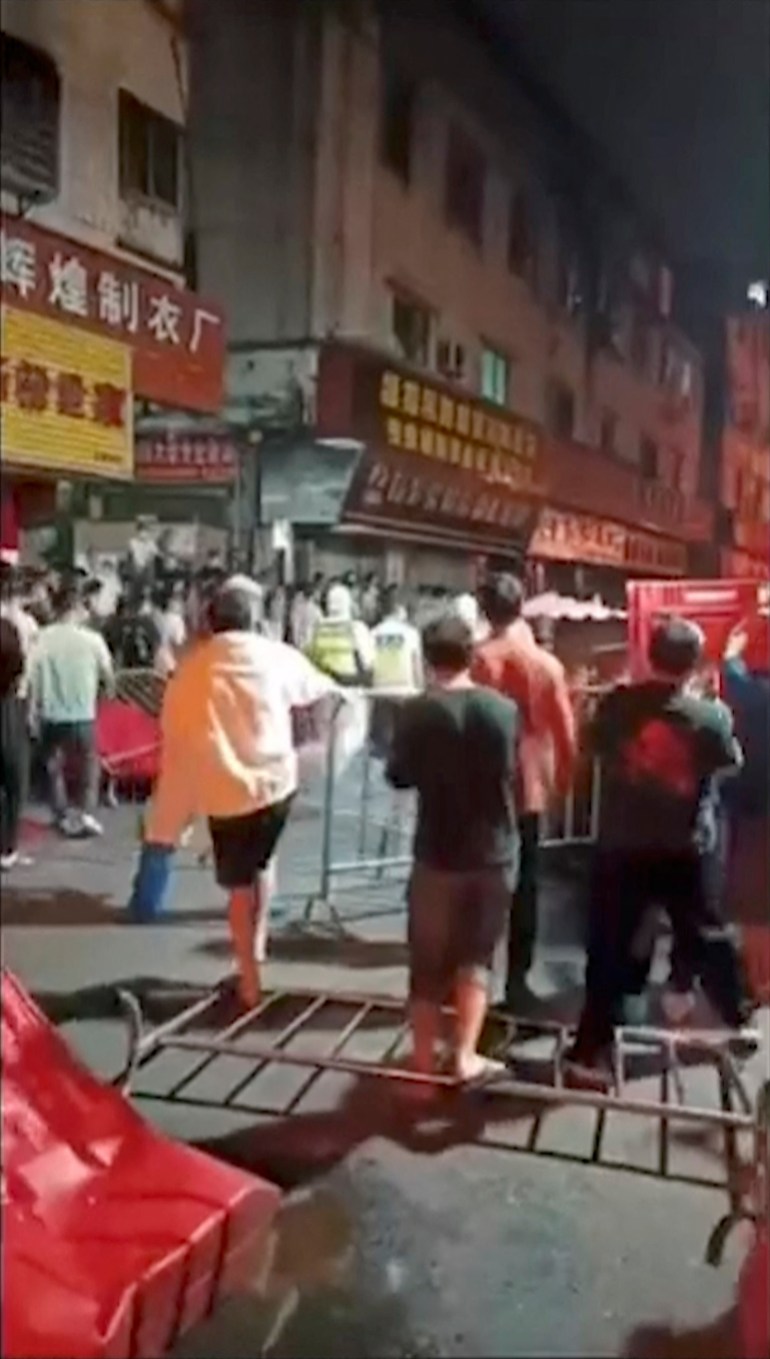Frustration turns to anger in China due to ongoing COVID curbs
The main campus of Peking University in Beijing has been locked down, amid a worsening COVID-19 outbreak in cities across China that has forced millions into quarantine and increased frustrations as the government continues with its zero-COVID strategy.
Students and staff at the university were told on Wednesday that they would not be allowed to leave the grounds unless absolutely necessary and classes were moved online at one campus until Friday, according to a notice from the university. The move followed the discovery of a single case of COVID-19.
Beijing reported more than 350 new cases of the virus in the latest 24-hour period, a small fraction of its 21-million population but enough to trigger localised lockdowns and quarantines. Nationwide, there were more than 20,000 cases, up from about 8,000 a week ago and the most since April.
Authorities have been inching away from citywide lockdowns and easing some curbs – notably on testing and travel – as they try to minimise the effect of their zero-COVID policy on people’s lives and the economy.
The latest round of lockdown has already turned frustration into anger with protests in a district of the southern city of Guangzhou on Monday night.
Videos posted online showed crowds in Haizhu, which is home to many who work in the textile industry pushing down COVID-19 barriers and flooding the streets. Some could be seen remonstrating with white hazmat-suit-clad workers who usually supervise the mass quarantines.
Among the latest outbreaks in China, Guangzhou’s is the largest, with new daily cases topping 5,000 for the first time and increasing concern that localised lockdowns could widen.
Twitter is blocked in China, and several hashtags related to the topic of “riots” in the area were scrubbed from China’s Twitter-like Weibo by Tuesday morning.
Neither the Guangzhou city government nor the Guangdong provincial police responded to requests from the Reuters news agency for comment.

By signing up, you agree to our Privacy Policy
He told Reuters local chat groups and social media feeds had been flooded with videos and pictures of the episode.
“When it happened so close to me I found it really upsetting. I couldn’t sleep last night after watching those images,” said Chet, whose residential compound has been locked down for about 20 days.
Main cities including Chongqing and Zhengzhou have also been caught up in the outbreak, nearly three years after the pandemic first began in the central city of Wuhan.
Last week, China announced testing would be more focused, rather than the current mass PCR testing, and indicated some stringent COVID policies would be relaxed, raising hopes for an end to zero-COVID.
President Xi Jinping has argued that the approach saves lives, especially for elderly people who have yet to be vaccinated.
Officials in Guangzhou, which is home to nearly 19 million people, said they plan more makeshift hospitals in addition to the six that have already been built for those who have the virus but do not have symptoms.
In Shanghai, which has been reporting relatively low numbers of cases, apartment blocks were still being sealed off and the Shanghai Disney Resort has been shut since October 31 after a visitor tested positive.
In the northwestern region of Xinjiang, the city of Ghulja is finally resuming normal life and work, as local authorities lifted a harsh three-month lockdown plagued by food shortages.



